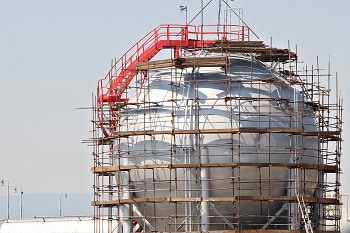How to Guarantee Compliance with Tank Welding Inspection Criteria
How to Guarantee Compliance with Tank Welding Inspection Criteria
Blog Article
A Detailed Summary of Storage Tank Welding Assessment Specifications and Methodologies for Improved Weld High Quality and Efficiency
The significance of welding inspection criteria in the manufacturing of storage tanks can not be overemphasized, as they work as the foundation for guaranteeing weld honesty and functional dependability. Different assessment techniques, including aesthetic evaluations and advanced non-destructive testing approaches, are essential in identifying possible problems that could jeopardize performance. Furthermore, sticking to governing criteria not just enhances weld quality but likewise alleviates the threat of costly failures. As we discover the nuances of these methods, it comes to be critical to think about how a methodical strategy can change existing practices and bring about considerable enhancements in outcomes.
Relevance of Welding Inspection Standards

Welding assessment criteria include a variety of criteria, including product specs, welding procedures, and certifications of workers involved in the welding procedure. By imposing these requirements, companies can systematically identify and remedy potential flaws, therefore lowering the chance of costly fixings or devastating failures. Furthermore, extensive inspection techniques cultivate a society of accountability and precision, motivating welders to keep high levels of craftsmanship.

Common Welding Evaluation Methods


Ultrasonic Examining (UT) is one more widespread technique, making use of high-frequency sound waves to spot internal flaws that may not show up externally. This approach is specifically effective for identifying gaps or incorporations within the weld metal. Magnetic Fragment Evaluating (MT) is additionally widely made use of, particularly for ferromagnetic materials, as it reveals surface area and near-surface flaws via the application of magnetic fields and ferrous fragments.
Furthermore, Fluid Penetrant Testing (PT) identifies surface-breaking defects by applying a penetrant to the weld and after that using a programmer to draw out the penetrant. Each of these methods adds to an extensive evaluation approach, making certain that welds meet the rigorous high quality requirements needed in container building.
Regulatory Standards and Compliance
Regulative criteria and conformity are necessary elements in making certain the security and integrity of bonded frameworks in container building and construction - Tank Welding Inspection. These requirements offer to Get More Info develop minimum demands for material homes, welding treatments, and inspection techniques, consequently lowering the danger of architectural failings and improving general efficiency
Trick companies, such as the American Society of Mechanical Engineers (ASME) and the American Welding Culture (AWS), offer guidelines that are widely taken on in the industry. Conformity with these standards not just guarantees adherence to ideal methods but additionally fulfills legal and contractual responsibilities, securing the passions of stakeholders.
Regulative bodies typically mandate adherence to certain codes, such as ASME Code Section IX for welding qualifications and API 650 for bonded storage tanks. These codes outline needs for welding methods, credentials of workers, and screening approaches to verify weld stability.
Regular audits and examinations are crucial to preserving conformity, as they assist identify variances from established criteria. Non-compliance can cause considerable fines, job delays, and safety and security risks. Thus, a durable understanding of governing criteria and a commitment to conformity are paramount in accomplishing high-quality and long lasting welded container structures.
Non-Destructive Evaluating Techniques
Just how can the honesty of bonded frameworks be assured without causing damages? Non-destructive screening (NDT) approaches supply a robust remedy, making it possible for examiners to review weld quality without jeopardizing the material - Tank Welding Inspection. Amongst the most common NDT methods are ultrasonic screening (UT), radiographic testing (RT), magnetic bit screening (MT), and color penetrant testing (PT)
Radiographic screening entails passing X-rays or gamma rays with the weld, producing photos that disclose architectural defects such as splits or gaps. This technique is my latest blog post invaluable for assessing the honesty of complex welds.
Magnetic bit testing is matched for ferromagnetic materials, where magnetic areas reveal surface and near-surface gaps. Dye penetrant screening utilizes a fluid dye to highlight surface-breaking flaws, making it a reliable method for non-porous products.
Each of these NDT techniques has unique benefits, enabling thorough assessments tailored to certain products and welding processes. By applying these strategies, sectors can make certain the reliability and safety and security of bonded frameworks, eventually enhancing overall efficiency.
Enhancing Weld Top Quality Through Examination
Effective assessment plays a critical duty in improving weld quality, acting as a vital checkpoint in the manufacture procedure. By recognizing possible issues early, evaluations alleviate the danger of compromised structural stability and make certain conformity with market requirements. Using a combination of visual evaluations, non-destructive screening (NDT) methods, and mechanical analyses, assessors can detect concerns such as porosity, fractures, and insufficient fusion.
Implementing a robust assessment method not just improves the total top quality of welds yet likewise cultivates a culture of accountability amongst welders and fabricators. Normal training and qualification of examination workers make certain that they are outfitted with the needed skills to identify and resolve potential troubles properly. This aggressive method reduces rework and associated costs, ultimately adding to predict effectiveness.
Additionally, extensive documentation of inspection findings gives useful insights into recurring issues, helping with continuous renovation in welding practices. By leveraging innovative innovations, such as automated ultrasonic testing or digital radiography, weld high quality can be boosted with more specific analyses. To conclude, an extensive evaluation procedure is crucial in attaining top quality welds, making certain safety and security, dependability, and longevity in storage tank fabrication.
Final Thought
In verdict, the application of strenuous tank welding inspection requirements and methodologies is necessary for making sure weld stability and performance. By making use of a combination of aesthetic examinations, non-destructive screening approaches, get redirected here and adherence to regulative requirements, organizations can effectively identify and mitigate possible issues.
Report this page